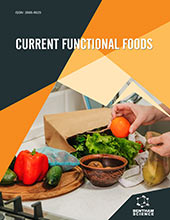
Full text loading...
We use cookies to track usage and preferences.I Understand

Diosgenin (DSG) is a steroidal sapogenin identified in the Dioscorea tokoro Makino ex Miyabe, Trigonella foenum-graceum and Solanum virginianum plant and used as a natural source of steroidal hormones. It possesses anti-inflammatory, anti-apoptotic, anti-oxidant, and several other pharmacological properties that make it a highly dependable drug for research purposes. The objective of this review is to provide a scientific rationale to researchers regarding the target-specific bio-potential of DSG as an ethnomedicine and to make it advantageous for drug designing and therapy modifications in the future.
Relevant literature was searched up to the current year by using online databases such as Scopus, Google Scholar, PubMed, Research Gate, and Science Direct by applying related search terms.
This review first addressed the molecular action of DSG on NF-ĸB, TGF-β1/Smad, AMPK/ACC/CPT-1A and SERBP-1c/FAS, etc., that are pathologically involved in a variety of diseases for better understanding as limited clinical research has been conducted to date. Further, the review explored the diverse pharmacological applications of DSG like neuroprotective, anti-cancer and anti-microbial activity. At last, we discussed the Green nanotechnology that is widely adopted to improve DSG’s pharmacokinetic profile.
Overall, the current review tries to update all the information about DSG's nutritional benefits, its application as nanomedicine, and diverse pharmacological actions based on various molecular targets for its commendable pre-clinical and clinical applications.

Article metrics loading...

Full text loading...
References


Data & Media loading...